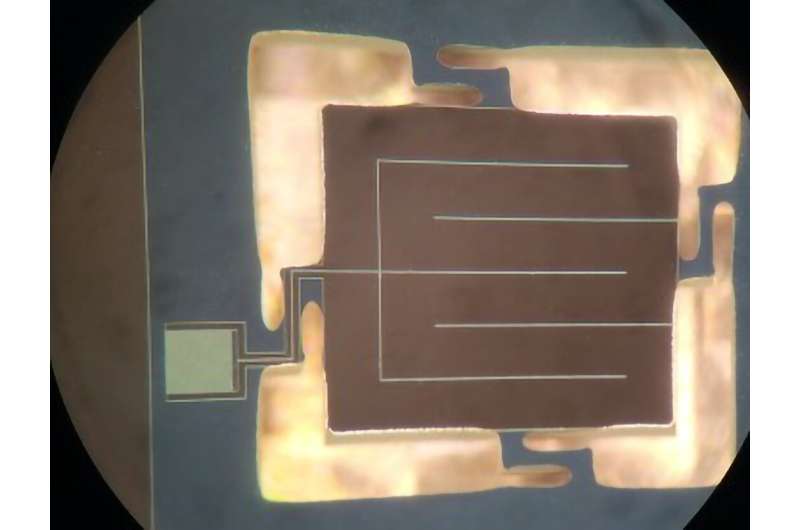Looking beyond the standard model to explore neutron decay

This prototype NIST sensor may help solve some mysteries of the universe by looking beyond the Standard Model.
The Standard Model is a long-standing theory that successfully describes particles of matter such as the electron and force carriers such as gluons. But it fails to account for phenomena such as the mysterious dark matter and dark energy that cosmologists theorize make up most of the universe.
One way to discover any new phenomena is to build more sensitive detectors. That's where NIST comes in.
NIST physicists are adapting a superconducting sensor previously used to measure photons (light) to measure charged particles instead. These thermal kinetic inductance detectors (TKIDs) can be combined into large arrays and potentially modified to detect faint signals of physics beyond the Standard Model.
The key focus area for the researchers is neutron decay. The neutron, which normally resides in an atom's nucleus, decays into an electron, a proton and another particle called an antineutrino when it's removed from the nucleus. Neutron decay is an ideal laboratory for looking beyond the Standard Model, due in part to its relative simplicity.
NIST's prototype (shown here) is still in the testing phase, and the goal is to make large cameras of the TKIDs that can detect signals up to a hundred times weaker than what's possible with the detectors for neutron decay that are available now.
Provided by National Institute of Standards and Technology




















